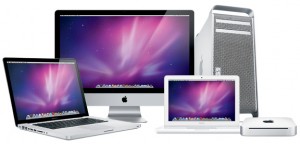Mac users hit by a Windows-style computer virus
Malware deletes traces of itself on victims’ machines to avoid detection
 Last month, security researchers discovered a new piece of malware had infected more than half a million Apple computers. This was the largest-scale attack on Apple’s Mac OS X operating system to date.
Last month, security researchers discovered a new piece of malware had infected more than half a million Apple computers. This was the largest-scale attack on Apple’s Mac OS X operating system to date.
The malware spread through a security hole in Java software that let its creators download a malicious program onto victims’ machines without prompting. Mac users did not even have to click a malicious link for their computers to be infected. The program simply downloaded itself.
Apple released two security patches for the vulnerability and encouraged Mac users to run their software updates as soon as possible. Within weeks, the number of infected computers dropped from 600,000 to 140,000, according to media reports.
Nevertheless, on Monday researchers at another computer security firm, discovered that a new variant of the malware, called Flashback.S. It continues to spread through the same Java vulnerability. Security experts commented the variant is actively being distributed. Some noted that the malware deletes traces of itself on victims’ machines to avoid detection.
The original Flashback variant used infected computers for click fraud, in which clicks on a Web advertisement are manipulated in exchange for kickbacks. It is not clear what the new variant of Flashback is being used for. Malware creators can choose to use infected computers however they like.
This is not the first time that Mac users have been hit by a Windows-style computer virus. Last year, security researchers discovered that a piece of malware, called Mac Defender, was aimed at Macs. Apple immediately released a patch effective by the end of May 2011.
Mac users are lately becoming the new target for Windows-style malware attacks. Windows computers were a frequent target for attacks, because there had always been more of them. Now, security researchers say, Apple’s growing share of the PC market has put a target on its back.


































